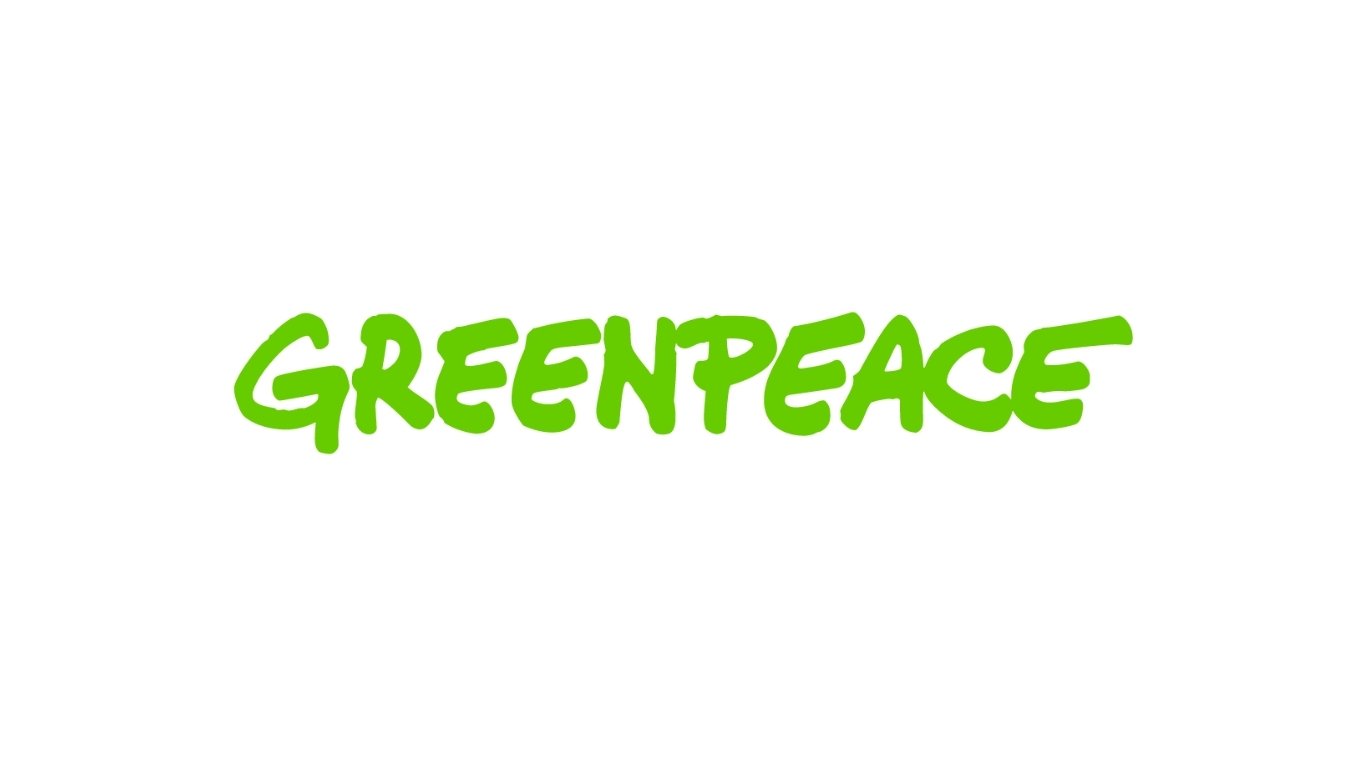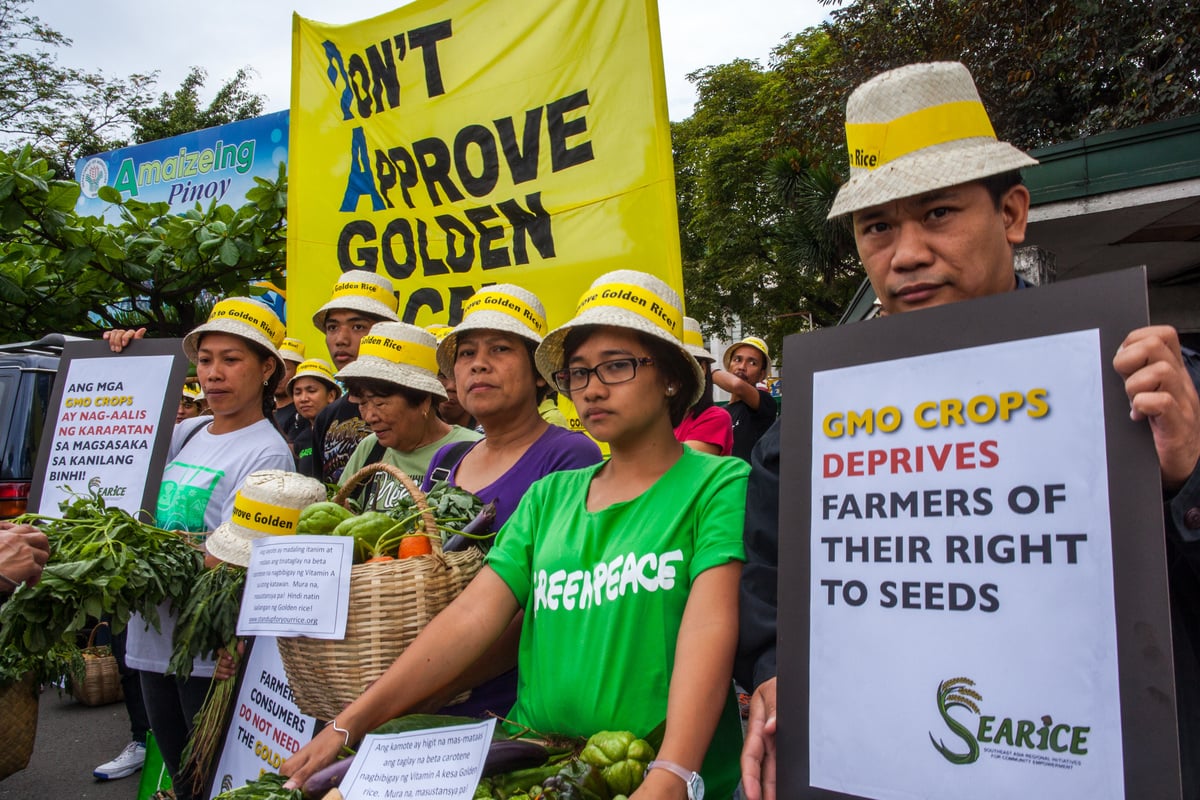The so-called ‘Golden’ rice is a genetically engineered (GE) rice variety that has been developed by industry to produce pro-vitamin A (beta-carotene). Its proponents have hyped GE ‘Golden’ rice as a high-tech, quick-fix solution to vitamin A deficiency (VAD), which is prevalent in developing countries and can lead to blindness. But behind the hype, GE ‘Golden’ rice is environmentally irresponsible, poses risks to human health and could compromise food, nutrition and financial security.
- GE ‘Golden’ rice has been in development for over 20 years. The tens of millions of dollars invested in GE ‘Golden’ rice would have been better spent on VAD solutions that are already available and working, such as food supplements, food fortification and home gardening. Greenpeace believes that, by combating VAD with ecologically farmed home and community gardens, sustainable systems are created that provide food security and diversity in a way that is empowering people, protects biodiversity and ensures a long-lasting solution to VAD and malnutrition.
- GE ‘Golden’ rice is highly likely to contaminate non-GE rice, if released to the environment. GE rice contamination will affect traditional, conventional and organic rice farmers because they will lose their markets, especially export markets, which would negatively impact rural livelihoods. If any hazardous, unexpected effects would develop from GE ‘Golden’ rice, the GE contamination would affect countries where rice is an essential staple and put people and food security at risk.
- Several populations affected by VAD are expressing concerns about using GE ‘Golden’ rice as a solution. It is irresponsible to impose GE ‘Golden’ rice on people if it goes against their religious beliefs, cultural heritage and sense of identity or simply because they do not want it.
More information:
Greenpeace opposes the release of GE crops, including GE ‘Golden’ rice, into the environment. GE crops are prone to unexpected effects which can pose a risk to environmental and food safety. GE ‘Golden’ rice has long been a poster child for the GE crop industry in an attempt to gain acceptance of GE crops worldwide. However, using GE crops to try to solve problems of malnutrition is simply the wrong approach, and a risky distraction away from real solutions.
GE ‘Golden’ rice does not address the underlying causes of VAD, which are mainly poverty and lack of access to a healthy and varied diet. This GE rice is a technological fix that may generate new problems. For example, the single-crop approach of GE ‘Golden’ rice could make malnutrition worse because it encourages a diet based solely on rice, rather than increasing access to a diverse diet of fruits and vegetables, considered crucial to combatting VAD and other nutrient deficiencies.
Rice can become contaminated with GE rice, even just from field trials, such as in the United States and China. It’s likely that GE ‘Golden’ rice will similarly contaminate non-GE rice. Rice is widely cultivated in many parts of the world and seed saving is common. If cross-pollination or seed mix-up causes GE ‘Golden’ rice contamination, it could prove difficult, if not impossible to eradicate. GE ‘Golden’ rice was back under the spotlight in 2012 following a scientific publication stating that researchers fed the experimental GE ‘Golden’ rice to children in China . However, it transpired that the parents of the children concerned weren’t informed the rice was GE. This violation of ethical rules led to disciplinary action being taken against the researchers involved. Despite all the hype surrounding GE ‘Golden’ rice, it still remains unproven whether daily consumption of GE ‘Golden’ rice would actually improve the vitamin A status of people who are deficient
Solutions:
The solutions to fight VAD and other -nutrient deficiencies are known, available and cost effective, what is lacking however is the political will and determination to put them in place.
In the past decade, great progress has been made on VAD and other malnutrition problems. For example, VAD is currently being successfully tackled by a combination of vitamins supplementation and home gardening in Bangladesh, where it was considered one of the worst public health problems 20 years ago. In the longer term, we need sustainable solutions to the problems of nutrition. For example, a range of projects, such as ecologically farmed home and community gardens, that increase access to healthy and varied diets can eradicate not only VAD, but simultaneously tackle other nutrient deficiencies. Ecological farming can in fact better contribute to healthy and diverse diets by empowering people to access and produce their own healthy and varied food, which is the real long-lasting solution populations affected by VAD need.
For a better understanding of Greenpeace position on ‘Golden’ rice, please refer to our briefing ‘Golden Illusion’ and report ‘Lack of Lustre.‘

Organic Rice Art Ratchaburi. Organic rice art in Thailand and celebration of a rich rice heritage. Different coloured rice varieties contain different levels of various nutrients, which could help to alleviate vitamin deficiencies naturally.
- Tang G, Hu Y, Yin S, Wang Y, Dallal GE, Grusak MA & Russell RM (2012) β-carotene in Golden Rice is as good as β-carotene in oil at providing vitamin A to children. American Journal of Clinical Nutrition 96: 658-664.
- Krawinkel MB (2009) Beta-carotene from rice for human nutrition? American Journal of Clinical Nutrition 90: 695–703.
http://www.irri.org/index.php?option=com_k2&view=item&id=12483:clarifying-recent-news-about-golden-rice&lang=en



